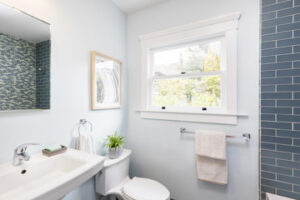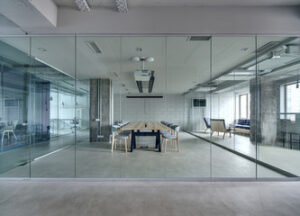Residential Roofing Contractors Erie PA offers an exceptionally high level of specialized service that is attuned to homeowners’ specific needs and housing requirements. They help protect homes from damage and provide an opportunity to upgrade aesthetics or energy efficiency within a surprisingly short time frame.
A roofing professional knows a lot about quality products and has better access to them at a lower price than most homeowners can afford. This can save homeowners a significant amount on future repairs or energy costs.

While there are many areas and aspects of a home that homeowners can treat like DIY projects or hire just any contractor to work on, roof repair and installation is one area where it’s essential to have an expert. A roof is a vital part of the house, protecting its occupants and structure from the elements. It’s also a complex and often underappreciated component that requires a special set of skills to install, repair, and maintain. That’s why residential roofing contractors are true heroes in the construction industry.
Whether you’re a homeowner looking to add a bright purple roof or just need some repairs, your local residential roofing contractor is the best choice. These skilled craftsmen know all about the latest in roofing technology and are capable of handling any project with ease. You can trust them to give you honest answers, the best timetables, and the highest quality materials.
In addition to repairing or replacing shingles, gutters, and drainage systems, residential roofing contractors also offer services to improve energy efficiency. They’ll check to make sure that the rafters and supports are strong enough, that there is sufficient ventilation, and that rainwater is being directed away from the foundation walls and crawl space. They’ll even clean out your gutters to prevent clogging that can lead to water damage in the foundation and basement.
Unlike general contractors who work on numerous homes, residential roofing contractors focus solely on their craft. This gives them the advantage of being knowledgeable in every aspect of a roof’s structure, functionality, and design. They can help homeowners choose a roof that will meet all of their needs while also complementing the style and architecture of the building. They can also recommend other features that will enhance the durability, safety, and appearance of the roof, such as ice dam barriers or solar panels.
While most people are willing to live with a broken this or that in their home, the same can’t be said for their roof. It’s easy to ignore a leaking spot or misaligned window, but if the roof is letting in the weather, it becomes an urgent problem that has to be addressed immediately. That’s why residential roofing contractors are truly unsung heroes – they’re the ones that make our houses and buildings sturdy, weatherproof, and beautiful.
They’re the Heroes of the Storm
Many people don’t think much of their roofing contractors until they see them hard at work, repairing roofs after a bad storm. They are the unsung heroes of home repair, protecting homes from damage and keeping families safe inside. These roofing professionals are highly trained and can assess the condition of a home’s roof, fix it when needed, and replace it when it becomes too damaged to be repaired.
Roofing contractors are usually licensed and insured, making them safer to hire for projects than unlicensed workers. They also have a great deal of experience, so they are able to perform their jobs quickly and efficiently. They can complete a roof replacement or repair in a fraction of the time that it takes a general contractor, and they are able to offer competitive prices due to their expertise.
Most residential roofing contractors specialize in shingle work in their local areas, as it is a popular and affordable option for homeowners. They are able to offer a variety of color options for shingles, so homeowners can find the perfect look to complement their homes.
In addition to repairing and replacing roofs, these professionals also offer maintenance services. They can regularly inspect the roof and fix any issues that may arise before they become larger problems. This can help reduce the need for expensive repairs in the future and extend the lifespan of the roof.
Some of these roofing contractors also offer other exterior services, such as gutter installation and painting. This helps create a uniform look for the home and can increase its curb appeal. They can also install ice melt systems and other features that will help keep the home functioning correctly throughout the year.
Unlike general contractors, roofing companies typically gain standing with manufacturers and are able to offer substantial warranties for their work. This gives them an edge over contractors who do not have these relationships and are often referred to as “storm chasers.” They will likely perform poor work or simply take your money and run, so it is important to hire a company that has a solid reputation in the community.
They’re the Heroes of the Homeowner
The roof of your home is an important part of its structure and serves a number of crucial functions. It is also a visual component of your home that can affect its curb appeal and value. Because of the complexity and importance of a roofing project, it’s critical to work with experts when choosing a contractor and scheduling a job.
Local roofing contractors understand the needs and concerns of their community’s homeowners. They are familiar with the housing styles and trends of the area, making them a better choice for custom-designed roofing solutions. They are also more attuned to local building codes, which can prevent costly mistakes that national franchises may be more likely to make.
Many roofing contractors are active members of their community, contributing to its fabric through a variety of ways. From coaching children’s sports teams to volunteering at events, they strive to create a strong sense of community within the neighborhoods they serve. This commitment is reflected in the way they treat their customers. Unlike large corporations that often employ automated chatbots and FAQ pages for customer service, residential roofing contractors provide personalized consulting services for each of their clients.
Whether you’re looking to repair storm damage or want to upgrade your roof with the latest in roofing technology, these contractors will help you find the best solutions. They are also available to answer questions and assist with insurance claims. Working with a local roofer can eliminate the stress of an insurance claim by helping you avoid fraudulent roofing companies that are trying to maximize their profits by filing false damages.
A good roofing company will be happy to show you examples of their work in your neighborhood. They might have a portfolio on their website or social media, or they may be willing to give you addresses of homes they’ve worked on in your area so you can drive by and check out the results. A reputable roofing contractor will also carry the appropriate level of liability and workers’ compensation insurance. That means if someone is injured on your property, you won’t be held liable and will have access to medical treatment.
They’re the Heroes of the Economy
In addition to repairing or replacing residential roofs, some roofing contractors also work on commercial roofs. This can include office buildings, apartment complexes, stores, schools and other communal buildings. Generally, these projects are larger in scope than the average residential roof and require a more experienced professional to work on them safely. Licensed roofers who specialize in these types of projects are often required to be insured for their own safety, as well as to ensure the job is done properly and with appropriate knowledge of the structure.
Depending on the scope of the project, it’s possible for roofing specialists to generate significant revenue by working with insurance companies. These “insurance claim specialists” work directly with home and business owners to negotiate repair and replacement costs for their damaged or destroyed roofs. Those who are skilled in this area of the industry can see gross margins of up to 40%, making it an appealing option for roofing contractors.
The other major revenue driver for the industry is working on new construction. Many residential homeowners are building additions to their homes or adding on sunrooms, which requires a new roof. This can add up to significant income for roofing contractors, as it allows them to create jobs and employ more people in the community.
To be successful, residential roofing contractors need to offer excellent customer service. This includes optimizing wait times and prioritizing what the customer needs over profit. It’s also important to communicate clearly with customers throughout the roofing process and provide detailed, upfront estimates that detail labor and material costs. Additionally, roofing contractors should regularly participate in local networking events to build relationships with complementary businesses and potential customers.
Lastly, roofing contractors should stay within their geographic areas of operation. It doesn’t make sense to travel 200 miles for a single roofing project. This can quickly become costly for both the roofing contractor and the homeowner, so it’s best to stick with one’s local area.





